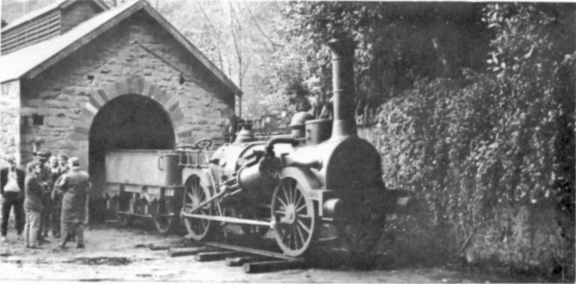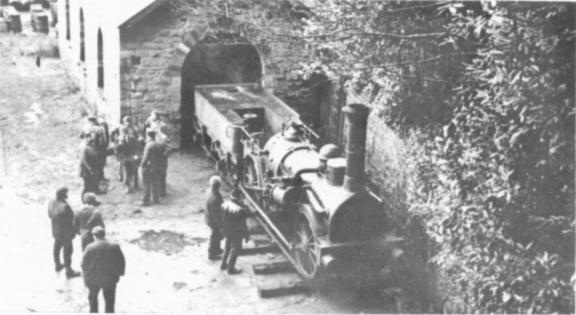
| THE INDUSTRIAL RAILWAY RECORD |
© FEBRUARY 1970 |
FIRE QUEEN
A. R. ETHERINGTON
In the 1880's the 4ft 0in gauge Padarn Railway from the Dinorwic Slate Quarries at Llanberis to Port Dinorwic on the Menai Straits was modernised. Although the two original engines FIRE QUEEN and JENNY LIND, built by A. Horlock & Company in 1848, were replaced by new six-coupled locomotives from the Hunslet Engine Company, the quarry management showed great foresight in preserving FIRE QUEEN for posterity. It was placed, together with other relics, in the original 1ft 10¾in gauge quarry loco shed which became a small museum. In due course a "lean-to" extension was built which obscured the doorway and marooned FIRE QUEEN within the rather cramped building. This made it impossible to secure satisfactory photographs of what was probably the least known of Britain's oldest surviving locomotives.


FIRE QUEEN and the museum survived the closure of the Padarn Railway on 27th October 1961 but with the running-down of the quarry tramways, many of the quarry locos were sold in the mid-1960's. FIRE QUEEN itself was purchased some years ago by Mr John Smith, Member of Parliament for Westminster, but was allowed to remain undisturbed until after the complete closure of the quarry in July 1969 when arrangements were made for its removal.
A sale of the remaining quarry locomotives, railway relics and a quantity of machinery was widely advertised. Having heard that FIRE QUEEN was to emerge for the benefit of a TV camera crew on 10th December 1969, I decided to visit Dinorwic on that date and view the lots to be auctioned three days before the sale, When I arrived FIRE QUEEN was outside on a short length of temporary track, and for the first time for many years it was possible to photograph the whole locomotive. But FIRE QUEEN's airing was brief. After less than three hours in the watery winter sunshine it was returned to its shed to await the low-loader. This duly arrived a week later (17th December), and FIRE QUEEN is now on view for all to see, but again impossible to photograph, at the National Trust's Penrhyn Castle Museum at Bangor.